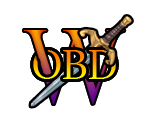
The word universe, as used in the OBD, has two meanings. The first is used to refer to a fictional continuity. Even if a fictional setting includes multiple universes (of the second type), it's still referred to as a "universe" for the purpose of describing everything in that particular work of fiction. Note that this definition is completely separate from the second one, using one to imply another would be an instance of equivocation. For example, if a character can destroy a universe (2nd type), it doesn't mean they can destroy a fictional universe composed of multiple universes. Alternatively, if one character is put up against a fictional universe (say, Naruto), it doesn't mean they have to fly through space and destroy all of the planets and stars in the entire universe where Naruto takes place.
The second definition of universe refers to a set of timespace like our own, often containing planets, stars, galaxies, etc. A universe is bounded, so you can't leave it just by traveling through space or time (unless there is some kind of opening). A universe the size of our own (at least hundreds of billions of galaxies, several dozen billion light-years across) is considered to be the standard for a universe. Universes significantly smaller than this are often just called dimensions. Most universes in fiction were created by a Big Bang.
Examples of universes:
- Heaven and Hell from Image Comics
- 616 from Marvel Comics
- The Atom's Microverse, Earth-One and Earth-Prime from DC Comics
- Mobius Prime from Sonic the Hedgehog
- The Internet from Megaman Battle Network
- Digital World from Digimon
See also:
- Big Bang/Big Crunch/Big Rip
- Black Hole
- White Hole
- Dimension
- Multiverse
